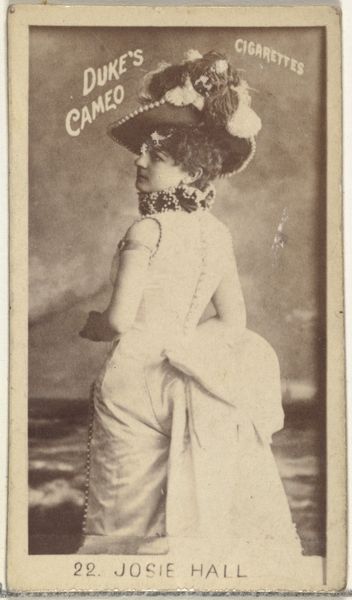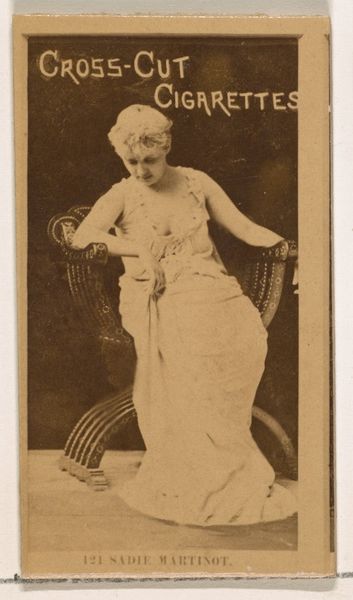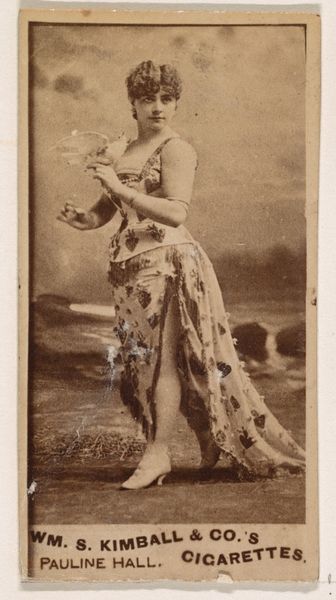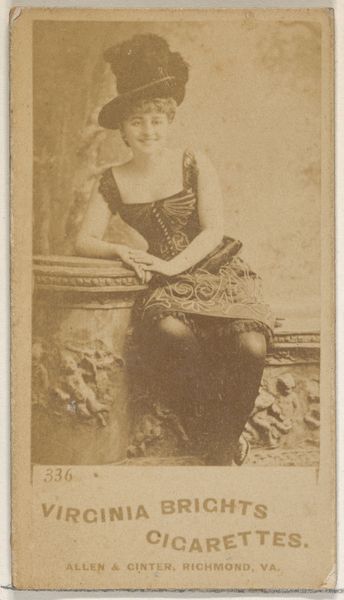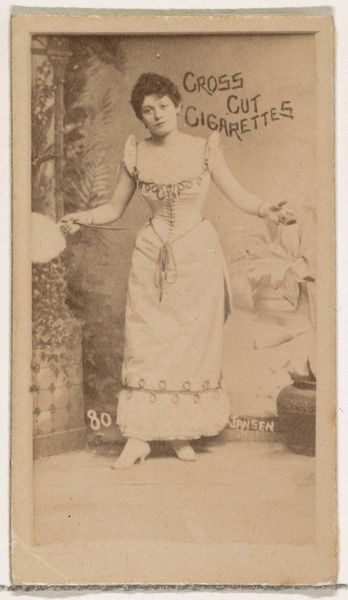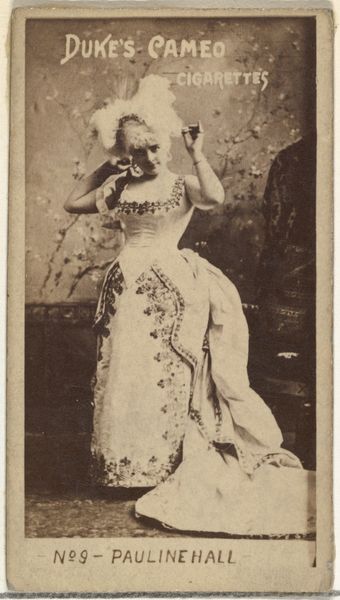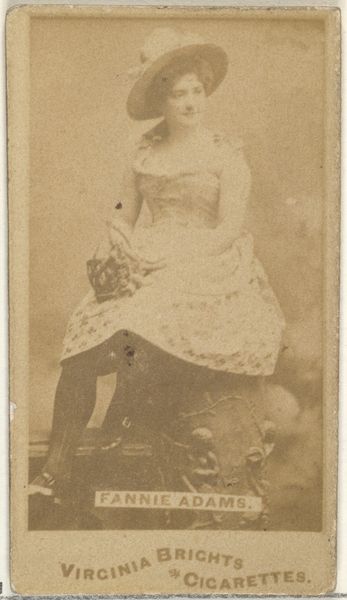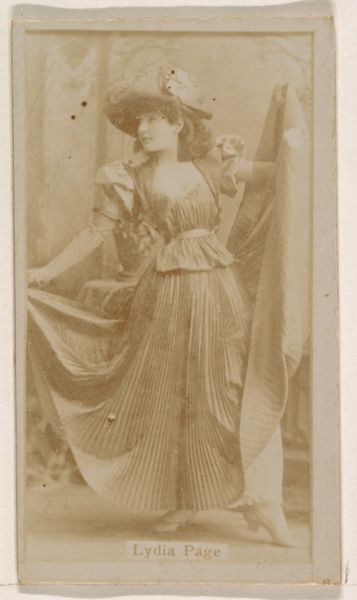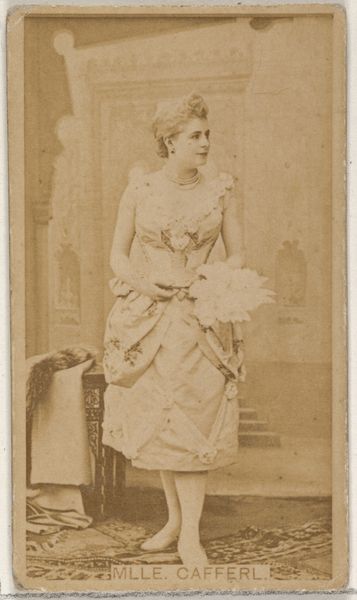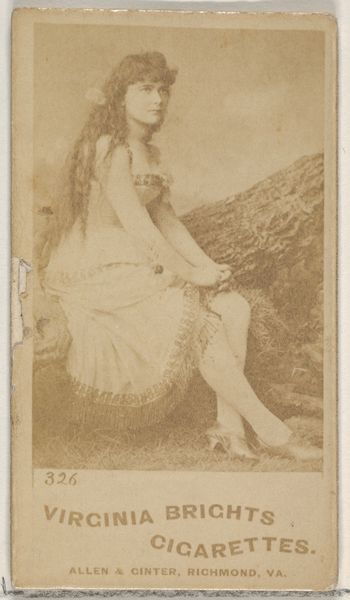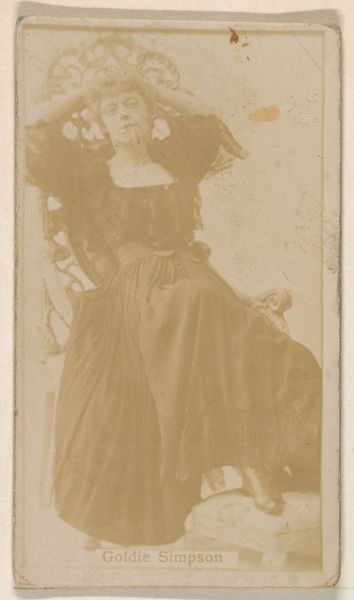
Dimensions: Image: 17.4 x 12.8 cm (6 7/8 x 5 1/16 in.) Mount: 23.5 x 20.6 cm (9 1/4 x 8 1/8 in.)
Copyright: Public Domain
Curator: Here we have Pierre-Louis Pierson's photograph, "Les yeux mirés," which translates to "Mirrored Eyes." It's a gelatin-silver print from the 1860s, currently held here at the Metropolitan Museum of Art. Editor: Immediately, I'm struck by this feeling of faded grandeur. The soft sepia tones create an almost dreamlike quality. And what's she looking at? Curator: Indeed! Pierson, known for his portraits of Countess de Castiglione, seems to explore themes of vanity and self-perception through the mirrored object in the Countess's hands. The "mirrored eyes," as the title suggests, reflect not only her physical image but also, perhaps, her inner self. Editor: The sheer volume of fabric in her gown and the elaborate hairstyle speak volumes about the expectations of feminine performance. Do you see it as critique, or merely a chronicling of status? Curator: That is the fascinating tension, isn't it? I find her use of the mirror as symbolic; in various contexts, from literature to religious paintings, the mirror is both associated with vanity but also with insight, revelation, truth, and access to deeper wisdom and more complete knowing. Perhaps the artist is commenting on the power that images, especially images of women, held. Editor: That’s insightful, how the romanticism apparent in her luxurious clothes belies the truth about being seen versus truly knowing oneself. The woman’s reflection stares back as if interrogating her position and status. Was this her power, or a gilded cage? Curator: Ultimately, I think, Pierson leaves the interpretation open. His visual language allows for these conflicting readings, forcing us to question the surface and consider the depths hidden beneath. Editor: The picture creates this interesting friction between observation, truth, and identity. Even through the soft focus, its impact resonates far beyond its era. It begs us to challenge perceptions. Curator: Absolutely. It's a dialogue between past and present, forcing us to acknowledge our role in constructing meaning and challenging societal roles even today.
Comments
No comments
Be the first to comment and join the conversation on the ultimate creative platform.

